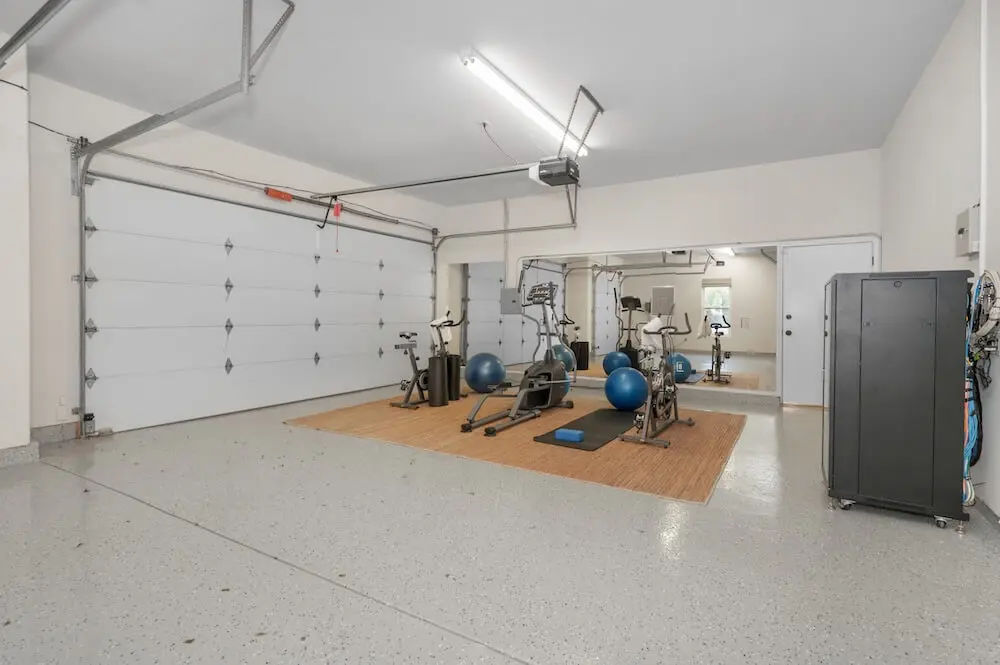Understanding Water Damage on Epoxy Floors in Detroit Homes

Epoxy flooring has become a popular choice for many Detroit homes. It offers a clean, sleek finish that holds up well against heavy use. It’s also easy to sweep and mop, making it a low-maintenance option for active households. However, preventing damage on epoxy floors is key to maintaining their durability and appearance over time.
Whether in the garage, basement, or even a laundry room, epoxy helps seal concrete floors and adds a polished touch. But epoxy isn’t immune to damage.
Homeowners often assume it’s strong enough to resist anything. While it is durable, water can still pose real problems. During the summer months in Detroit, especially July, the humidity levels can put indoor surfaces at risk if they’re unprotected or poorly sealed. That includes epoxy flooring.
Catching signs early and knowing how to prevent damage can save you time, stress, and costly repairs later on.
Causes of Water Damage on Epoxy Floors
Epoxy coatings are made to shield your flooring, but they’re not completely immune to water issues. Several water-related causes are common in Detroit homes.
One major issue is high humidity. In July, Detroit gets warm, moist air that invites water buildup indoors. Basements can be especially vulnerable when there’s limited airflow. Over time, the extra moisture can loosen the seal on your epoxy coating.
Flooding is another frequent cause. Whether from rainstorms, a broken pipe, or clogged drainage, standing water can seep into small cracks or gaps in the floor. If water gets underneath the epoxy, it becomes trapped. Soon you’ll see bubbling and peeling.
Improper installation is another factor to consider. If the surface wasn’t properly prepared or if curing time was rushed, water can break through more quickly. Weather changes in Detroit can also affect the bond if installation isn’t handled correctly.
Common causes include:
- Poor indoor airflow or high indoor humidity
- Leaks from pipes, appliances, or nearby windows
- Rainwater seeping through worn-out seals or basement walls
- Damp conditions during installation or incomplete drying
- Water left standing too long after spills or floor cleaning
Water damage often begins as a small, unnoticed issue. But left alone, it can spread and cause deeper structural problems that are more expensive to fix.
Signs of Water Damage on Epoxy Floors
Recognizing early signs of damage can help you avoid bigger problems. Water under or around your epoxy flooring may show up in subtle ways at first.
A common sign is bubbling or blistering. When moisture rises under the epoxy, it pushes upward and creates small raised areas. These bubbles may eventually burst or grow in size, damaging the surface further.
Discoloration is another sign. You may notice parts of the floor turning cloudy, white, or yellow. If you spot uneven color patches—especially after rain or humid days—that could be hidden moisture.
Cracking or peeling often starts after the epoxy loses its bond. Once water makes its way beneath the surface, the epoxy begins to separate and lift away. That ruins the seal and lets in even more moisture.
Keep an eye out for:
- Blisters or small raised spots
- Haziness or color shifts in patches
- Peeling edges or flaking surface
- Fine cracks that spread outward
If you notice any of these signs, it may be time to ask a professional to check it out before it worsens.
Preventing Water Damage to Your Epoxy Floors
The best way to deal with water damage is to avoid it in the first place. Prevention starts with good installation and continues with routine care—especially during hot, sticky Detroit summers.
Proper installation is key. When epoxy is applied to a clean, dry, and prepped surface, it forms a strong bond that keeps moisture out. Rushed or sloppy work, on the other hand, leaves weak spots that water can penetrate.
Controlling indoor humidity also helps. Moisture builds up easily in spaces like basements or garages. A dehumidifier or a fan can add airflow and reduce that risk.
Leaks should be addressed right away. Areas around laundry hookups, water heaters, or plumbing lines need regular checks.
Try these steps to reduce the risks:
- Check plumbing, AC units, and appliances regularly for leaks
- Use a dehumidifier in damp rooms during summer months
- Avoid letting water sit after mopping or spills
- Replace or reseal gaps around windows and doors
- Watch for signs of condensation on walls, floors, or nearby surfaces
Small actions can go a long way when dealing with water exposure. Don’t wait for discoloration or peeling to show before taking step one.
Repair Options for Water-Damaged Epoxy Floors
Not every water-related issue means you need to rip up the whole floor. But finding out how bad the damage is starts with an expert evaluation.
On the surface, a floor might look like it just has light wear. But the real problem could be moisture trapped under the surface, especially if discoloration and bubbles continue spreading or reappearing.
For minor cases, localized fixes may be enough. Some areas can be sanded and recoated with new epoxy, if done quickly and by professionals.
If a larger section is affected, full removal may be needed. That means stripping down to the concrete, prepping the surface, and laying a fresh epoxy coating that bonds the right way.
Repair options include:
- Resealing small blisters or clouded patches
- Sanding and reapplying new epoxy in specific areas
- Grinding and recoating damaged zones that softened or cracked
- Reinstalling epoxy if the base concrete is compromised
Repairs might seem simple, but poor fixes can make things worse. If you’re not sure how deep the damage goes, it’s best to contact a pro who knows what to look for.
One homeowner in Metro Detroit noticed just a few small bubbles near their garage entrance. After heavy rain, it didn’t look like much. But moisture had reached under a good portion of the coating. By the time it was fully removed, cracks in the underlying concrete were already forming.
The job was saved by addressing it early. But a delay would have caused more expensive damage not just to the epoxy, but the structure beneath it.
Why Maintenance Matters for Detroit Homes
Epoxy floors are strong, but ignoring warning signs or skipping maintenance can make them vulnerable. And once water issues start, they only get worse over time.
Bubbles, cracking, lifting corners, or hazy patches shouldn’t be ignored. What may seem like a cosmetic issue often points to something more serious. That’s why getting ahead of the problem early matters.
Detroit summers bring heat and humidity that epoxy floors must stand up to. Without proper sealing, even a well-installed epoxy floor can suffer when exposed to moisture for too long.
When installed and looked after the right way, epoxy flooring in Detroit can last for many years with minimal trouble. Staying on top of small issues and calling in help before they grow can help preserve your floors and your peace of mind.
If something doesn’t look quite right in your epoxy floor, don’t guess. Let someone with the right experience take a look. It could mean the difference between a quick patch and a major replacement.
Ready to protect your floors from water damage? Learn how epoxy flooring in Detroit can help safeguard your space while keeping it looking sharp. Armor Tough Coatings delivers expert installation and long-lasting solutions you can count on. Get in touch with us today for professional support.


